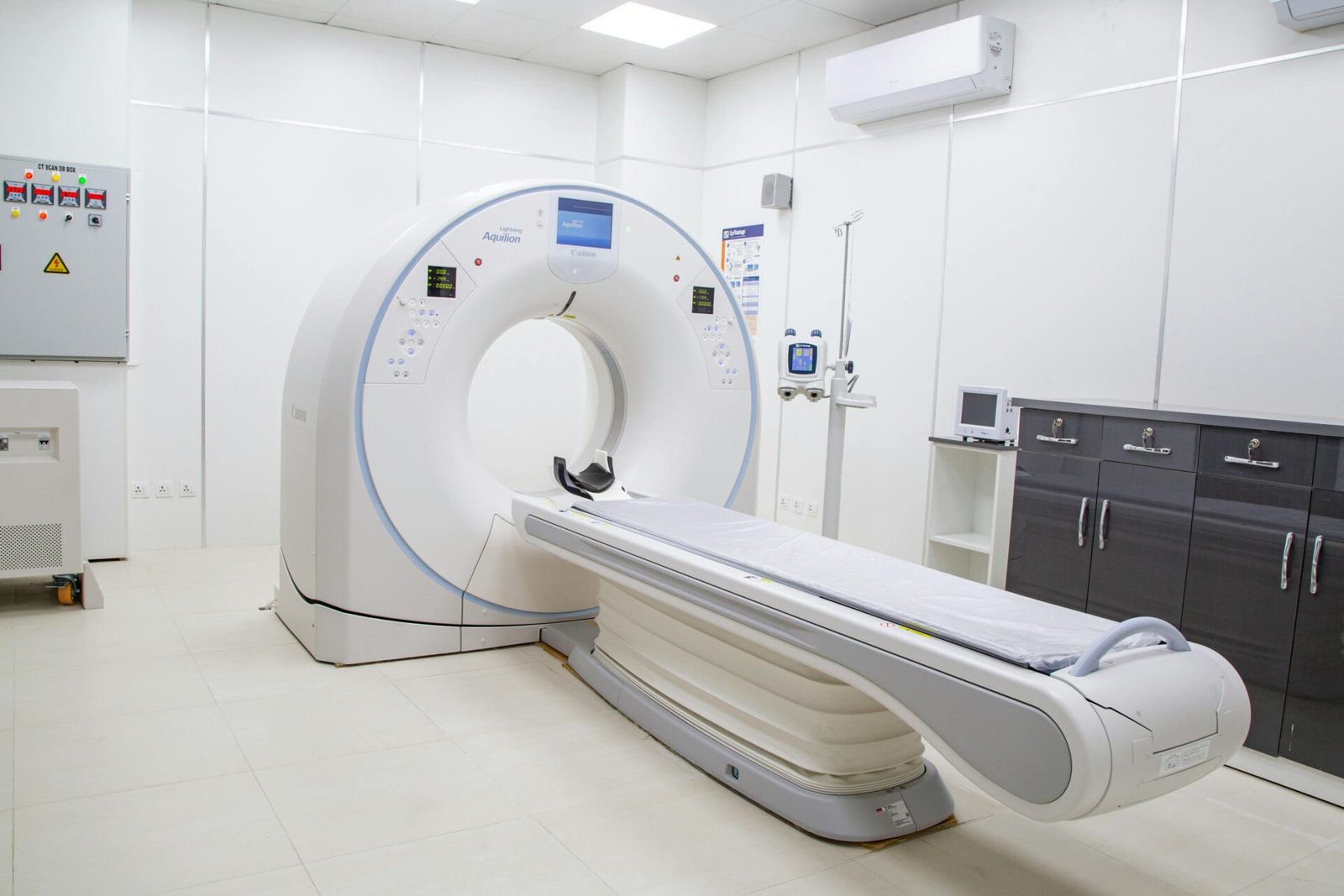Looking for PET CT Scan in Bangalore with quick, accurate reports and caring staff at a clean, reliable place like Koshikaa PET CT Scan Centre.

A PET-CT scan is a medical test that combines two scans:
Together, they give a complete view of both the structure and activity of your organs. It’s commonly used to detect cancer, check heart or brain problems, or find infections. You get a small tracer injection, lie in a scanner for 20–60 minutes, and the test is done. It’s safe with minimal radiation.
Doctors may advise a PET CT scan to:
✔️ Detect cancer and see if it has spread
✔️ Check how well cancer treatment is working
✔️ Diagnose heart problems like reduced blood flow
✔️ Identify brain conditions such as Alzheimer’s






The average cost of a PET CT scan in Bangalore ranges from ₹15,000 to ₹30,000, depending on:
Type of scan (whole body, brain, cardiac)
Radiotracer used
Hospital or diagnostic centre location
At Koshikaa Diagnostics, we provide affordable PET CT scans with clear pricing and no hidden charges.
Bone PET-CT (Positron Emission Tomography – Computed Tomography) using NaF-18 is a diagnostic imaging technique used to assess bone health and detect abnormalities such as fractures, infections, tumors, and metastases. NaF-18 is a radioactive tracer that binds to bone mineral, allowing PET-CT scans to highlight areas of increased bone activity or metabolism. This imaging modality is particularly useful in oncology for staging and monitoring skeletal metastases and in orthopedics for evaluating bone diseases and injuries.
Regional PET-CT is a scan that focuses on one part of the body instead of the whole body. It combines PET and CT to show both how that area looks and how it works.
PET cardiac viability imaging is a scan used to check if the heart muscle is still healthy and active in people with heart problems like blocked arteries.
FDG PET is a scan that shows how active your cells are. A small amount of radioactive sugar (FDG) is injected into your blood. Active cells, like cancer cells, absorb more FDG and show up brighter in the scan.
PSMA PET/CT scan is a special test used mainly for prostate cancer. A small amount of a radioactive tracer is injected, which sticks to prostate cancer cells. The PET scan shows where the cancer is active, and the CT scan shows the exact location inside the body.
DOTANOC PET/CT scan is a special test used to find and monitor neuroendocrine tumors (NETs). A small amount of a tracer called DOTANOC is injected, which sticks to NET cells. The PET scan shows where the tumor is active, and the CT scan shows its exact location in the body.
FAPI is a special tracer used in cancer scans. It targets a protein called FAP, which is found in support cells around tumors. These cells are often active in many types of cancer.
Utilizing PET CT Scan in Bangalore enables effective visualization of various structures and conditions within the body,


Booking an Affordable PET CT Scan at Koshikaa Diagnostic scan center bangalore is easy and takes less than a minute. Just follow these 4 simple steps:
Enter your name, mobile number, and email. It helps us contact you quickly and confirm your appointment.

Our team will call you to confirm your appointment and guide you on any instructions for the scan.

Once confirmed, you’ll receive the appointment details, center address, and reporting time directly to your phone or inbox.

Visit the center at your scheduled time. Our expert team will ensure a smooth, comfortable experience.
✔️ Fasting: Do not eat for at least 6 hours before the scan.
✔️ Medications: Inform your doctor about any ongoing medicines.
✔️ Clothing: Wear comfortable clothes without metal zips or buttons.
SCAN DURATION: The actual PET scan procedure typically takes about 30 minutes, but the entire process may last up to two – three hours due to the time required for the radiotracer to be absorbed by the body
TO-BE-MOMMYS and BREAST FEEDING MOMMYS!! Please Inform your provider about the possibility of pregnancy or breastfeeding and follow the instructions advised by them
| Feature | PET CT Scan | MRI Scan | CT Scan |
|---|---|---|---|
| Shows | Organ function + structure | Soft tissue structure | Body structure (bones, organs) |
| Best For | Cancer, heart, brain metabolism | Brain, spine, muscles | Bones, lungs, abdomen |
| Radiation? | Yes (minimal) | No | Yes |
| Scan Time | 30–90 mins | 30–60 mins | 5–15 mins |
| Contrast Use | Sometimes | Sometimes | Sometimes |
I was thoroughly impressed with my lung PET CT scan here. The staff was friendly, the technician skilled, and results were promptly provided with clear explanations
Koshikaa for thyroid PET CT scan surpassed my expectations. The staff was professional and caring, the technician thorough, and the facility clean and comfortable. Highly recommended.
My Head and Neck PET CT scan experience here was seamless. The knowledgeable technician answered all my questions, and results were promptly delivered with follow up to ensure understanding.
A PET CT scan (Positron Emission Tomography) or pet scan in bangalore is a specialized imaging technique that measures molecular activity and processes in the body. This powerful test evaluates essential functions like metabolism, which helps in assessing the health of your organs. A small amount of a safe radioactive substance called a radiotracer is injected, which our PET scan in Bangalore detects to identify abnormal metabolic activity, providing precise diagnoses far better than separate scans would allow.
PET scans in Bangalore are particularly helpful for detecting cancers and tumors, as these cells light up due to their higher metabolic rates. This imaging can assist in identifying cancer, determining its spread, and checking treatment effectiveness. Additionally, PET CT scans can reveal solid tumors in areas like the brain, breast, and lungs. They are also useful for evaluating heart conditions by showing blood flow issues and assessing brain disorders such as tumors or Alzheimer’s disease, making them a vital diagnostic tool.
For PET CT Scan in Bangalore, a radiotracer is injected, absorbed more by diseased cells. The PET scanner detects radiation, creating images of affected tissues. A PET/CT scan combines these images with X-ray images for detailed anatomical info. Preparation includes a medication list, fasting, water intake, and comfortable clothing.
Any PET CT Scan in Bangalore has potential side effects also. Radiation exposure is minimal, and water helps flush out the radiotracer. Pregnant, breastfeeding or chestfeeding individuals should avoid PET scans. Allergic reactions to radiotracer or CT scan contrast dyes are rare. Diabetic individuals may need diet and medication adjustments before the test.
About 2-3 hours including preparation and scan time.
Yes, you can go home and continue your normal routine.

Bone X-rays are essential for diagnosing fractures and assessing bone alignment, aiding doctors in developing treatment plans and monitoring healing progress. They provide detailed images of the skeletal system, helping identify abnormalities or injuries that may not be visible through other imaging techniques